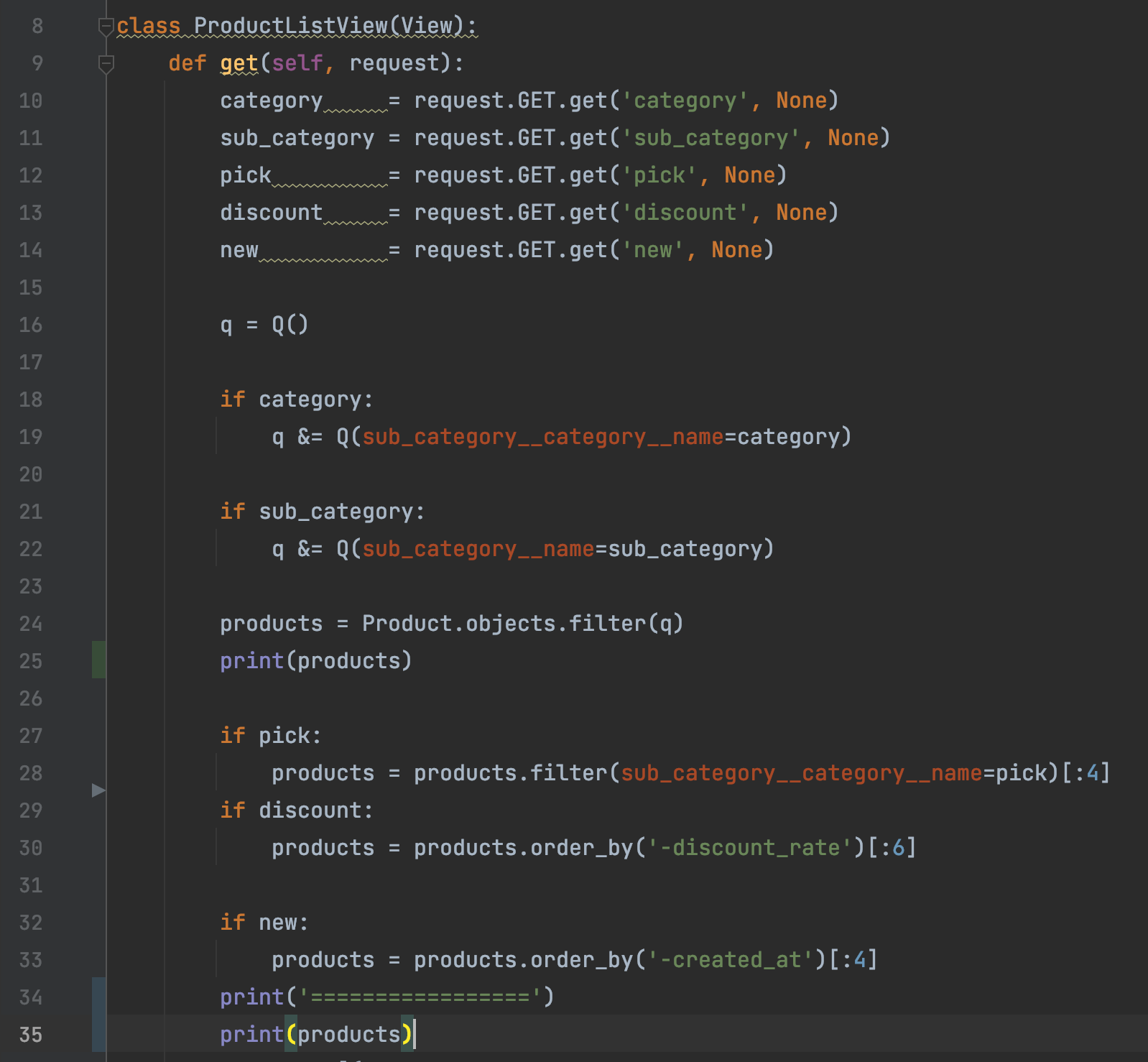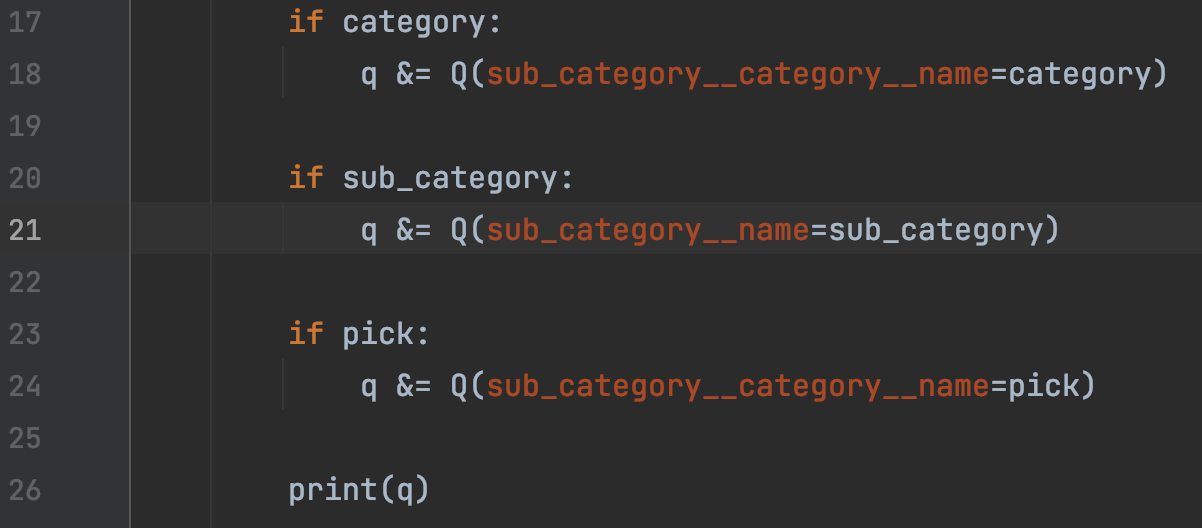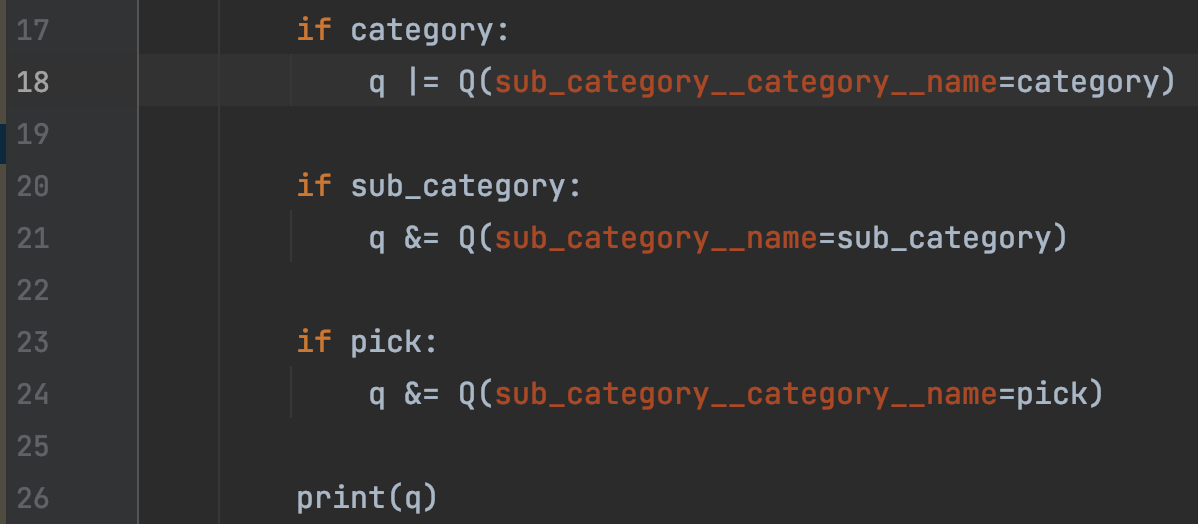Q 객체
장고 orm에서 쿼리문처럼 or 조건을 쓰고 싶을때 사용할 수 있다.
#sql 쿼리문
select * from product where category=소 or sub_category=등심
# 장고 orm
Product.objects.filter(Q(category=소) | Q(sub_category=등심))&를 사용하면 where 조건 and 조건이고,
|를 사용하면 where 조건 or 조건이다.
where 조건 and 조건 => 조건 둘다를 만족하는 결과값만 보여준다. 즉 교집합
where 조건 or 조건 => 조건들중 하나라도 조건에 맞으면 그 결과 값을 전부 다 보여준다. 즉 합집합
Q()
from django.http import JsonResponse
from django.views import View
from products.models import Product
from django.db.models import Q
class ProductListView(View):
def get(self, request):
category = request.GET.get('category', None)
sub_category = request.GET.get('sub_category', None)
pick = request.GET.get('pick', None)
discount = request.GET.get('discount', None)
new = request.GET.get('new', None)
q = Q()
if category:
q &= Q(sub_category__category__name=category)
if sub_category:
q &= Q(sub_category__name=sub_category)
if pick:
q &= Q(sub_category__category__name=pick)
products = Product.objects.filter(q)
if discount:
products = products.order_by('-discount_rate')[:6]
if new:
products = products.order_by('-created_at')[:4]
result = [{
'id' : product.id,
'created_at' : product.created_at,
'name' : product.name,
'image_url' : [product_image.image_url for product_image in product.productimage_set.all()],
'price' : int(product.get_real_price()['real_price']),
'real_price' : int(product.original_price),
'discount_rate': int(product.discount_rate),
} for product in products]
return JsonResponse({'result': result}, status=200)위는 전체적인 내 코드이고, 아래는 Q를 사용한 부분이다.
&= , |= 사용하는 경우
q = Q()
if category:
q &= Q(sub_category__category__name=category)
if sub_category:
q &= Q(sub_category__name=sub_category)
if pick:
q &= Q(sub_category__category__name=pick)
products = Product.objects.filter(q)Q() 은 Product.objects.all() 과 똑같다.
Product 전체를 변수에 담아두고, q변수 안에 조건들을 넣어주는 느낌!
즉, q &= Q(sub_category__category__name=category)는 q라는 변수안에 조건들을 하나하나 넣어주고 마지막 filter에 그 변수를 넣어서 쿼리를 한번만 날려도 되도록 해준다.
변수 q에 맞지 않은 조건이 들어왔을 경우에는, all()로 Products 전부를 가져온다.
직접 http 문을 날려보면서 확인 해봤다.
http GET localhost:8000/products discount==1 로 key discount를 넣어줬을때 print문으로 찍어본 결과는 다음과 같다..
discount의 value값이 들어왔을 경우에,if discount:까지 내려가기전 print 문을 찍어보니
Product테이블의 전체의 상품이 나온것을 확인 할 수 있었다.
if discount:조건문에 한번 걸치고 난뒤, 다시 products 변수에 어떤 값들이 담아져 있는지 확인해보니 할인율 순으로 6개의 제품들만 products 변수에 담겨 있는 모습을 확인 할 수있었다...!
💡 쿼리를 적게 날릴 수록 데이터 베이스에 부담이 덜 가서 좋다.
add를 사용하는 경우
첫번째로 Q를 선언하고 .add()로 추가할때 두번째 인자값은 and, or 둘중 어느것으로 연결할지 나타내고, 여기에 선언된 값으로 앞의 값과 연결된다.
비어있는 Q객체에 조건을 넣어주는데 뒷부분에 이런식으로 connector를 사용 할 수있다.
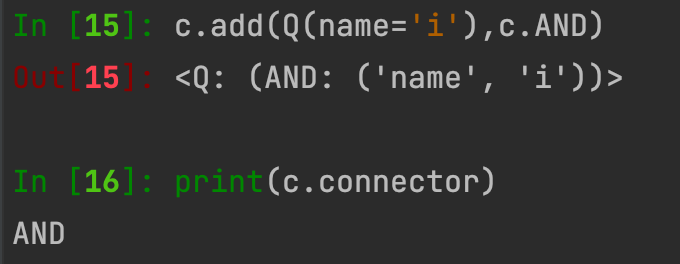
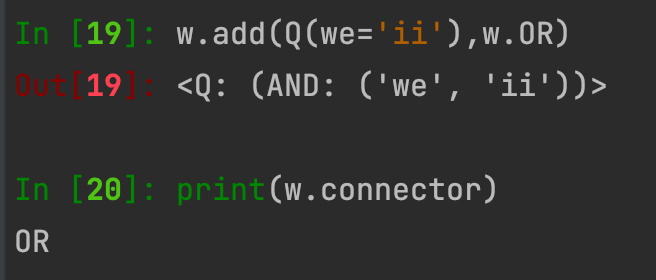
💡 주의할점!!
add로 조건을 합치든, &=, |=를 사용하든 두번째에 오는 and, or이 앞과 뒤의 조건을 연결한다.

sub_category의 조건을 바꾸어 주니깐 and와 or이 바뀌는 모습이 확인된다.
category의 조건을 바꿔준다고 해서 and가 or로 바뀌지 않는다.
and or 자꾸 헷갈림..
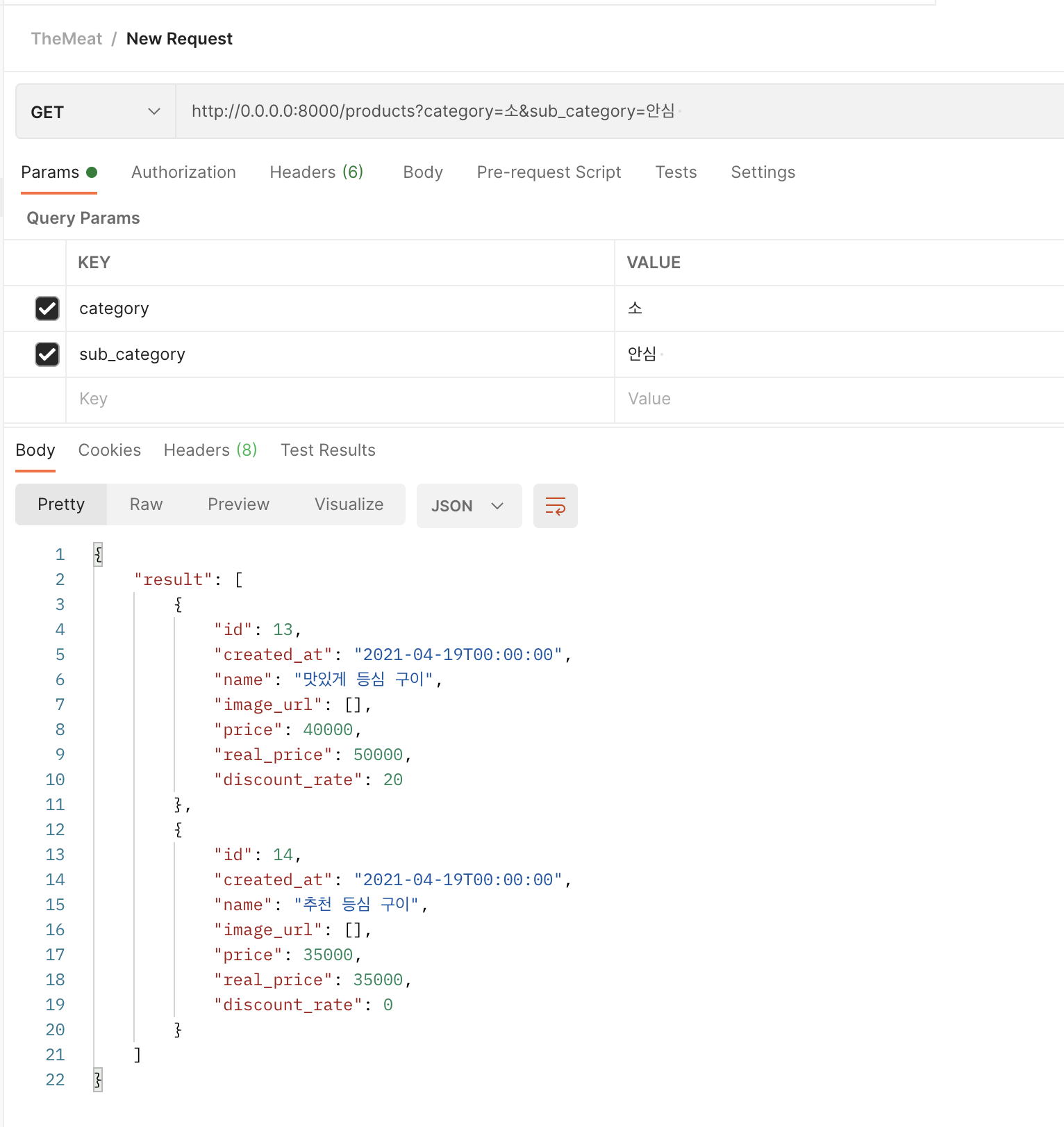 이게 &를 사용 했을 때 (교집합)
이게 &를 사용 했을 때 (교집합)
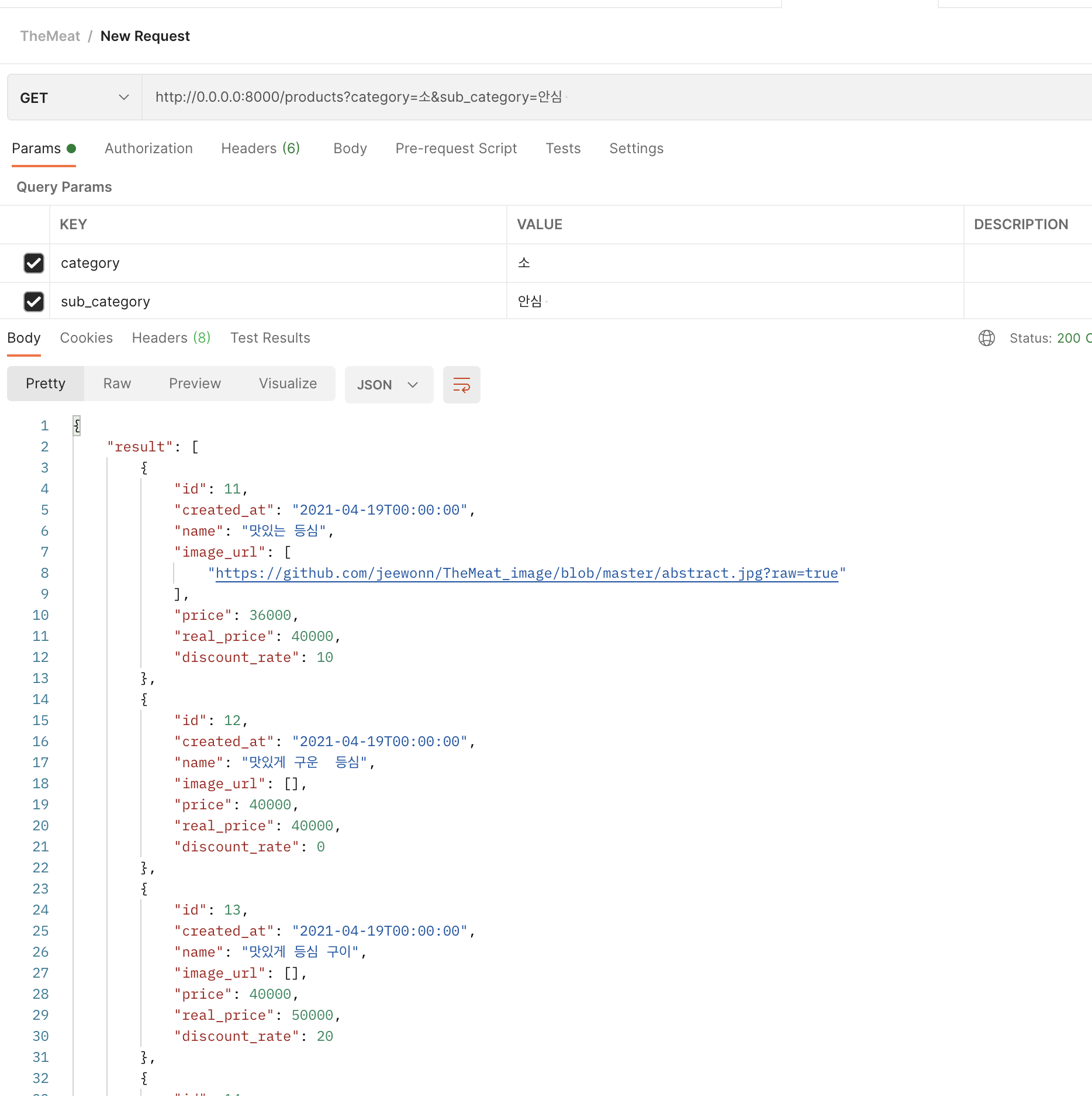 이게 |를 사용 했을 때 (합집합)
이게 |를 사용 했을 때 (합집합)

